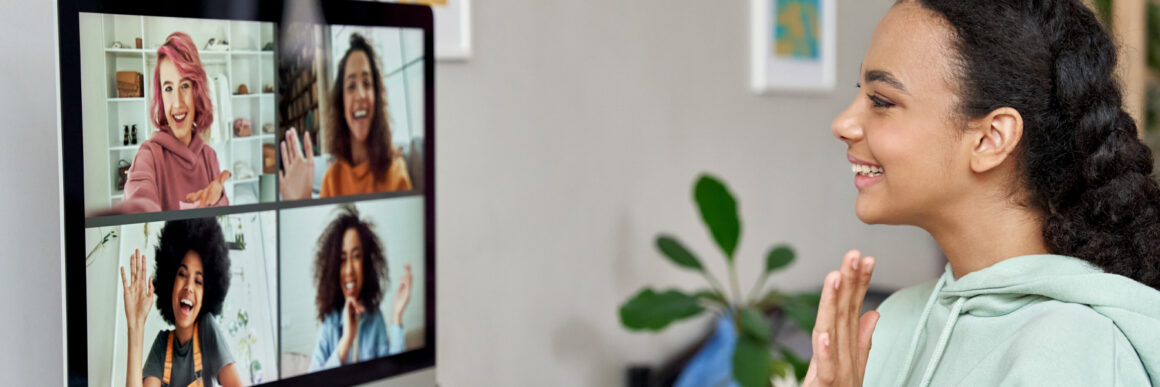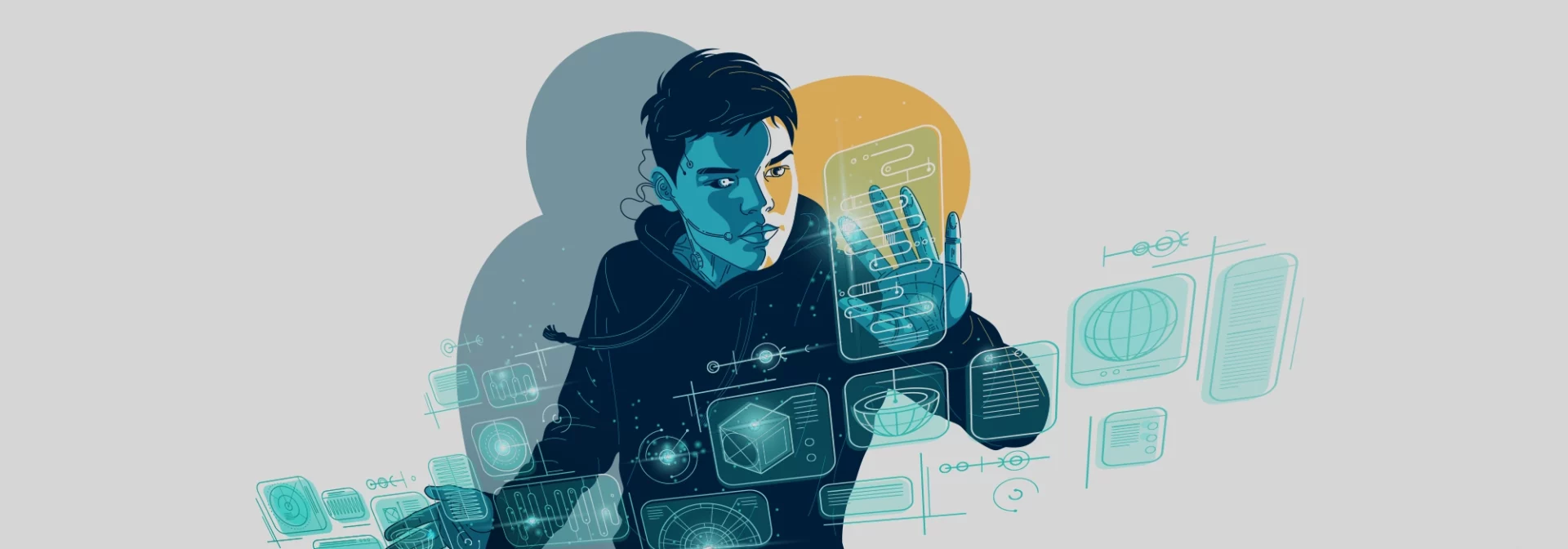The answer lies somewhere in the middle and how we allow our young people to use online platforms.
Is digital media good or bad? It can seem like a question equal in importance to what is puberty or when is the right age for kids to have social media accounts. While it is tempting to think of digital media in absolutes — either all good or all bad — the reality is that digital media is, in most cases, neither bad nor good. As is often the case, the answer to whether digital media is good or bad lies somewhere in the middle. What side of the equation it falls on often depends on when, how, and why we are using it.
What Are Some of the Negative Effects of Digital Media?
Negative Physical Impacts of Digital Media
Extensive use of digital media and technology can have a host of physical side effects, including eye strain, vision issues, carpal tunnel syndrome, “tech neck” (neck pain that’s caused by strain and stress to the muscles and tissues of the cervical spine), and headaches.
When we look at our preteens and teens, specifically, we see that digital media and technology impacts their sleep. Research shows that three-quarters of American adolescents have at least one screen-media device in their bedroom and that roughly 60% of teens report regular use of those devices in the hour before bedtime. Stimulation and blue light exposure have been shown to interfere with circadian rhythms and reduce melatonin production, resulting in a delayed bedtime and decreased total sleep time.
At a time in their lives when preteens and teens need more sleep than full-grown adults, sleep deprivation can negatively impact academic functioning, alertness, mood and behavior management, and self-regulation. To help counteract this, research from Harvard University suggests that putting screens away at least 2-3 hours before bedtime is extremely beneficial to overall sleep health.
Negative Emotional Impact of Digital Media
Increasingly, studies show our teens’ mental health is significantly impacted by the use of digital and social media. The Centers for Disease Control published a study in 2017 that found that increased media and screen time was linked to increases in depressive symptoms in 8 – 12 graders and suicide-related outcomes (increasing 65% from 2010 to 2015).

Other significant risks include body dysmorphia and low self-esteem as preteens and teens compare themselves with often altered images of individuals that appear to be “more attractive,” “thinner,” ”more muscular,” “more popular,” and “having more fun.” Coupled with this, we are seeing increased rates of other mental health issues including anxiety, isolation, substance abuse, and the negative fall-out of cyberbullying.
What’s worse, internal documents from companies like Meta (Facebook and Instagram) reveal its own awareness of its toxicity to adolescents — teen girls in particular — and its knowledge that it is causing significant mental health challenges, including eating disorders, self-harming behaviors, and suicidality, alongside its total failure to do anything to mitigate those risks.
Negative Educational Impact of Digital Media
As learning, textbooks, and educational resources move increasingly online, there are moderate risks to our youths’ overall comprehension and long-term memory for learned information. Studies have shown that students who read texts on computers have a slightly lower overall comprehension of what they read and are less likely to set goals, reread difficult sections, or check in to see how much they have understood as they read (also known as “metacognitive learning regulation”).
Reading and working online is more physically and mentally taxing, and we may be less likely to convert information into our long-term memory.
Distractibility is also a challenge with the use of digital media for educational purposes, as it is so easy for students to divert from the task at hand to checking email, playing an online game, posting on social media, and more. When distraction persists, overall learning and academic performance often suffer.
Negative Relational Impacts of Digital Media
Digital media is changing the way that we interact with one another and shifting our dynamics offline. While cyberbullying is probably the most obvious way we see media negatively impact relationships between adolescents, it is also causing challenges for many preteens and teens who, while becoming increasingly comfortable navigating online relationships, are struggling with in-person social skills and social anxiety.
Family time, face-to-face interactions, and learning to function in the wider world are all invaluable for our youth; but the constant stimulation that technology provides, as well as its addictive-like nature challenges even the most dedicated of caregivers as they seek to help their youth manage the time and nature of their usage.
Negative Cultural Impacts of Digital Media
We increasingly understand the dramatic impact digital media has on our views of the world and our fellow citizens. Misinformation, disinformation, and other divisive content are rampant on the internet and social media, and adolescents (and adults) are often ill-equipped to discern which sites constitute reliable sources of information, and which do not.
Additionally, social media is too often used to target preteens and teens in an attempt to pull them into hate groups or lure them into abusive employment, pornography, and human trafficking. The individual and culture-wide negative impact of these forces is widespread and growing.

How Does Digital Media Positively Impact Teens and Tweens?
Digital Media Cultivates Connection & Social Interaction
Perhaps one of the most obvious benefits of the internet is the mechanism it provides for connecting people both near and far. Working and studying during the COVID-19 pandemic became possible because of the internet, and further made it possible for adolescents and their families to maintain critical social and familial connections across both time and distance.
Through digital media, students are exposed to other cultures and other parts of the world, and are able to build rich and fulfilling friendships with people they would previously be able to connect with.*
The Pew Research Center shows that 57% of teens say they have made a new friend online, and 83% report feeling more connected and informed about their friends’ lives as a result of their participation in social media. Moreover, 68% of teens have reached out on social media platforms for support during difficult times.
Digital Media Fosters Learning & Creativity
Information has never been found so readily at our fingertips. The ability for us all to access new learning and develop new skills is unparalleled. Want to learn to make coq au vin, climb a sheer rock wall, knit a sweater, or rebuild your carburetor? There’s an instructional video or class for that!
Digital Media Helps Cognitive Development
According to research cited in The Self-Driven Child by William Stixrud, Ph.D., and Ned Johnson, “many video games are ‘hard fun,’ exercising cognitive skills like pattern detection, eye-hand coordination, and hypothesis construction,” which has translated into surgeons who are moderately heavy gamers making 37% fewer surgical errors than their non-gaming peers.
Related research also quoted by Stixrud and Johnson revealed that people who play first-person shooter games at a significant rate may have “a better ability to perceive salient details and to remember landmarks” as well as to “filter out irrelevant information.”
Folks who use digital media in this manner may also be more efficient at multitasking. So while caregivers may still want to work to lure their gamers out of their rooms on occasion, it may not be wasted time as so many would believe.

Digital Media Provides A Source of Fun
Let’s be honest — there are lots of fun things to do using social media. Everything from creating and viewing TikTok videos, to playing video games, to reading books, to chatting online with friends, and more are all fun and fulfilling ways to spend time online.
Digital Media Fosters a Sense of Belongingness
For preteens and teens who manage any number of disabilities, are neurodivergent, are part of the LGBTQ+ community, or those who have uncommon “niche” interests, the web has provided a unique conduit for building relationships with other similarly situated individuals.
For a gay young person growing up in a tiny town where being gay is not openly accepted, or a preteen who is passionate about juggling, building fairy gardens, or geocaching for example, there are communities online where they can “find their people.” Particularly for kids who feel stigmatized in their offline world, the connections they build online can literally be lifesavers.
In the end, what is clear is that the internet and other forms of digital media are neither all good nor all bad. While there are real risks that need to be acknowledged and managed, there are also great rewards. When we start with awareness and work from there to build media habits around our individual and family values, there are engaging and empowering ways to manage media and take the best of it while leaving behind the rest.
*Caution is warranted when it comes to relationships forged exclusively on the internet. For younger teens in particular, a rule that they may not interact with anyone they don’t know in real life is a wise one, and as they grow, teens need a tacit understanding that not everyone on the internet is who they say they are.
